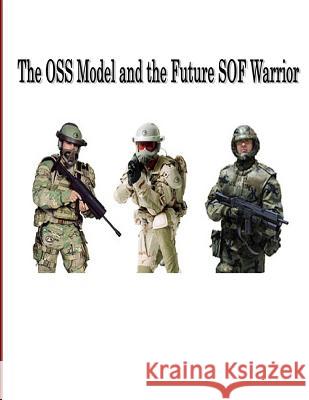The OSS Model And The Future SOF Warrior » książka
The OSS Model And The Future SOF Warrior
ISBN-13: 9781502578426 / Angielski / Miękka / 2014 / 80 str.
It has been some 70 years since the Office of Strategic Services (OSS) quietly came into being as a small, nearly invisible, Washington, D.C. based organization whose unique capabilities and strategic reach resulted in decisive outcomes within World War II European, Chinese, Southeast Asian and other theaters of operations. Today the record of the OSS survives as far more than a topic of historical curiosity. As a result of its dramatic successes and failures, the OSS has developed a legacy of mission accomplishment that survives as a practical touchstone for the (SOF) Warriors of the 21st century. In fact, the OSS Model continues to provide fresh insights and practical relevancy to the concept of persistent engagement as practiced by today's United States Special Operations Command (USSOCOM). In speaking about the OSS veteran, a contemporary Special Forces officer observed that - we must understand who he is, not just what he did. As part of his Commander's Guidance for 2011, then USSOCOM Commander Admiral Eric T. Olson directed that a study be undertaken to address if and how the OSS Model could serve as a source of inspiration to incorporate into USSOCOM efforts to select, organize, resource, and develop authorities for SOF of the future. Specifically, the study was intended to identify ways to promote agility in the command through leveraging the OSS selection process, modeling its streamlined organizational structure, using the OSS simplified resourcing authorities, and adapting its charter and authorities to conduct seamless intelligence and operations. Admiral Olson highlighted the OSS attributes of expertise, ability to leverage networks and creativity to guide JSOU's efforts.
Zawartość książki może nie spełniać oczekiwań – reklamacje nie obejmują treści, która mogła nie być redakcyjnie ani merytorycznie opracowana.











